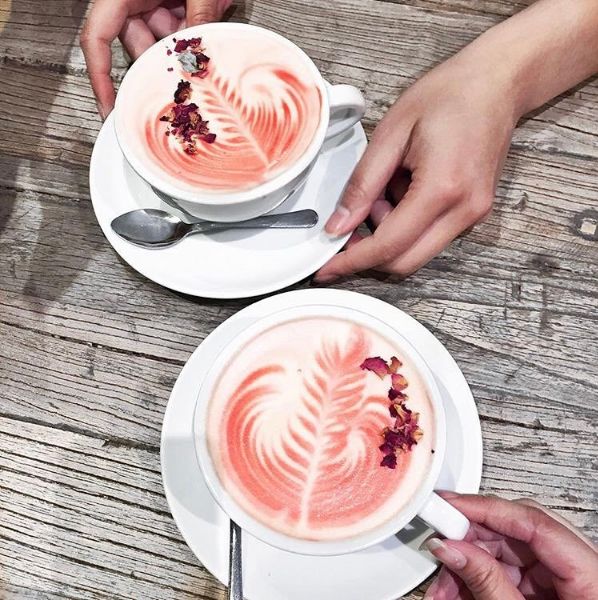
Making the Perfect Espresso
The enjoyment of making the perfect espresso
There is real skill involved in making the perfect espresso, but luckily we're here to help.
Making an espresso is an enjoyable experience and something the barista should take pride in. The majority of people who ask for an espresso know what they want and will appreciate the care and skill you put into making it. Remember that you appear to them to be something of a magician behind that big machine when from all the activity you produce a cup of aromatic, steaming coffee. As you become more experienced, you will form your own routine - add a dash of showmanship - it all goes towards that perfect cup of espresso.
Preparing the perfect cup of espresso
In almost every restaurant or cafe there are different ways of preparing an espresso. Very rarely do you find two people making an espresso the same way.
This guide will take you through all the steps required to make the perfect espresso, right from opening your fresh coffee beans to serving it with flair.
The coffee grinder
There are many different grinders on the market but all follow the same basic principles and need care and attention.
There are two main types of grinders, one with "conical" blades the other with "flat" blades. Both work on the same basic principle. Always ensure that you have read the instruction manual provided with the unit and are aware of the blade replacement and regular maintenance requirements.
As a very rough guide, the following table can be used but remember to check with your grinder manual:
Coffee use per day & blade adjustment
1 kg - every 12 months
2 to 3 kg - every 6 to 7 months
4 to 6 kg - every 3 to 4 months
Blades are the most important part of the grinder. There are two blades, one which rotates and one which remains stationary. Adjusting the blade controls the grind of the coffee and is done by moving the grind control. This control is usually marked "Fine" or "Coarse" (Sometimes "Coarse" is marked as "Grossa").
Coffee dose
The average dose of coffee is 6.5g. To check, draw at least 10 portions of coffee and weigh each portion. Then add all the portion weights together and divide by 10. The average weight should be to 6.5g. If not, refer to the grinder manual and adjust the dose control up or down until the correct average is reached.
Infusion time
Adjustment of the blades starts with the checking of the infusion time of the coffee:
1. Take a double filter holder and fill it with two measures of coffee. This should be 13g. Press down into the handle and place in your espresso machine.
2. Time the "infusion" of the coffee. This is the time between activating the start of the serving and the time that the first drops of coffee appear, if your infusion time is:
LESS THAN 5 SECONDS
A shorter infusion time means that the grind is too coarse and the water is simply running through the ground coffee. The taste and presentation will be poor, the creama will be thin and dissipate quickly. Adjust the control towards the "Fine" setting in stages until the correct infusion time is reached.
MORE THAN 5 SECONDS
A longer infusion time indicates that the grind is too fine. This type of grind causes the coffee to burn as the hot water spends too long passing through the grind. The coffee will look dark and taste burnt.
3. The 'Crema' on the top of the coffee should be a mixture of light to medium brown in colour and firm enough to suspend a teaspoon of sugar momentarily.
4. Total cup filling time should be between 25 to 35 seconds for 20 to 35 cc of coffee.
5. The flow of the coffee should be in a thin even flow and not 'gush'.
General guidelines for your grinder
Always remember to keep your grinder clean and to maintain the correct level of beans and ground coffee. Bear in mind the need for fresh coffee and only put in enough beans to cover the day's use.
THE HOPPER
The hopper, which contains the beans, needs to be kept clean. Remember that your customers see the beans and a dirty hopper is very off putting. At the end of every day, remove any left over beans and store them overnight in an airtight container. Wipe the hopper inside daily and once a week wash the hopper in warm water to remove coffee oil residues.
GROUND COFFEE
Do not overload the portion dispenser with ground coffee, the ideal level is 3/4 full. Any ground coffee left over at the end of the day needs to be removed and put in an airtight container overnight. Leaving it in the dispenser overnight will lead to the coffee losing taste and aroma.
The press or tamper
This is for pressing down the ground coffee in the filter holder to provide an even, flat surface that allows the water to be equally distributed over the coffee. Do not use a press that has a round base, this creates an uneven flow of water in the centre and sides of the coffee resulting in poor taste and aroma. Press the coffee down firmly.
Always remember to use the press, it is an important part of making a perfect cup of espresso coffee.
A last point - after using the press, remember to clean the rim of the filter holder. This prevents coffee grounds from passing into the cup.
Your espresso machine
As with grinders, there are a wide range of espresso coffee machines available. However, there are general rules concerning the making of an espresso coffee that are applicable regardless of the make.
MACHINE CONTROL CHECKS
There are five important control checks that need to be made to ensure an excellent cup of espresso.
1. WATER LEVEL
The water level must always show approximately 70% capacity in the water tank. This is indicated by the small glass tube fitted to the front of most espresso machines. Most modern machines have automatic water controls but some older units need to be manually controlled.
2. TEMPERATURE AND PRESSURE OF THE BOILER UNIT
The temperature of the water when it reaches the ground coffee in the filter holder must be 92 to 95 degrees Celsius to reach the cup at a temperature of 72 degrees Celsius. To compensate for the loss of temperature, water in the boiler unit is usually 120 degrees Celsius. To maintain this temperature, it is necessary, through a series of pressure valves, to maintain a pressure of one atmosphere (1 ATM). This pressure is usually shown on the front of the machine. If a different reading is shown, consult the manufacturer's manual or service department.
3. VOLUMETRIC PUMP PRESSURE
The volumetric pressure is usually shown by a dial on the front of the unit (often both the boiler unit pressure and volumetric pump pressure are on the same dial). This pressure is affected by the mains water pressure. The volumetric pump pressure can only be read when the machine is activated to make a cup of coffee. The reading should be nine atmospheres (9 ATM) when the unit is activated. The pressure is made up by the mains water pressure and the pressure created within the espresso unit.
For example, if the mains water pressure is 3 ATM, the espresso has to create a temperature of 6 ATM to make 9 ATM.
In some areas the water mains pressure is so high that reduction valves have to reduce the mains pressure. All these corrections are carried out at the time of installation.
It is, however, worth carrying out regular checks to ensure the ATM pressure reading is showing 9 ATM. If not, contact the manufacturer's service department.
4.SHOWER SCREENS, FILTERS, GASKETS & FILTER HOLDERS
Filters: Check by holding up to the light and seeing if all holes are clear and free from build-up.
Shower Screens: These should be replaced if they are clogged or damaged.
Gaskets: These become hardened due to the high temperatures they have to withstand. Check to ensure they retain their elasticity. Replace where necessary.
Filter Holders: These should be replaced if the handles become significantly off to the right of centre.
5.WATER DISTRIBUTION
This is a visual check carried out by removing the filter holders and activating the water. There should be a reasonably even spread of water and a small quantity of steam as the water falls. Do not stand too close to the active group as the water droplets that spray out are extremely hot. If there is no steam or an uneven fall of water, remove and check the filter screens. Once again, it is essential to refer to the manufacturer's manual before doing this.
Coffee and your customer
Everyone likes to know what they are eating or drinking, especially if it is something special like espresso.
Espresso coffee is made fresh for each customer and cannot be prepared in advance. While this may cause a slight delay, the time can sometimes be well spent explaining a little about the coffee, it's origins and the preparation process.
Here's a brief explanation of espresso:
BODY The full bodied taste of espresso is due to the presence of tiny drops of oil and very fine particles of ground coffee extracted by the water.
CREMA The cream which forms at the top of espresso coffee is dense and formed by the dispersion of oils contained in the coffee and by air. It also helps to "protect" the aroma of the coffee.
AROMA The aroma is made up from ultra-light volatile substances which are diffused in the air.
To summarise, a cup of espresso must be full-bodied, have a pleasant, persistent aftertaste and be intensely aromatic. The coffee is flavourful and must have a dense, frothy crema.
Espresso coffee variations
It must be said that connoisseurs of Italian espresso coffee do not usually add anything apart from sugar to the coffee.
However there are a number of variations, only some of which are listed as there are too many individual or regional choices to create a definitive list.
CAFFE' MACCHIATO
Espresso with a dash of cold milk
Caffe' Gocciato
Espresso with a dash of hot milk
CAFFE' BRUNO
Espresso with more milk
CAPPUCCINO
Served with hot milk, can be with or without 'froth' and with or without chocolate powder.
CAFFE' LATTE
Has more milk than cappuccino
LATTE MACCHIATO
Is a glass of milk with coffee added
CAFFE" CON PANNA
With a spoon and cream
CAFFE' CANNELLA
With cinnamon
CAFFE' CHIODI DI GAROFANO
With cloves*
CAFFE' NOCE MOSCATA
With Nutmeg*
* A very small amount, in ground form, is added to the boiling water before introduction to the ground beans.
CAFFE' MIELE
With honey
CAFFE' CIOCCOLATO
With chocolate
CAFFE' CORRETTO
Served with liqueur (various)
CAFFE' RUM
With black rum and sugar
CAFFE' MAZARAN
Black coffee, sugar with crushed ice and maraschino (cherry liqueur)
We hope this guide has given you some useful tips, you're now ready to make the perfect espresso, have fun!


